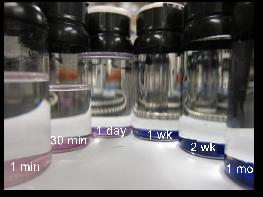Don't call them stiff: Metal organic frameworks show unexpected flexibility

Metal organic frameworks (MOFs) are proving to be incredibly flexible with a myriad of potential applications including as antimicrobial agents, hydrogen-storage materials and solar-cell components. And despite their rigid-sounding name, researchers are reporting that MOF structures are also dynamic—much more so than previously thought. They report this discovery, which could lead to the synthesis of brand-new types of materials, in ACS Central Science.
As the name implies, MOFs are composed of networks of organic (carbon-based) compounds interspersed with metal ions. Many different combinations of metals and organic components exist, but much of what we know about these systems comes from a zinc and benzene di-acid framework called MOF-5. For over 15 years, the prevailing view of MOF-5, and all MOFs, has been that they are static. But thanks to a serendipitous finding, Mircea Dinca and colleagues suspected that wasn't true.
During a routine characterization, the researchers found that some solvent molecules stuck to MOF-5 when they used a method that should have gotten rid of it all. That observation suggested there might be different species within the material than previously believed. So, the team investigated further and demonstrated that the zinc inside MOF-5 can adopt several different arrangements with both the organic components and the solvent. Over time, it can shift between these geometries. The change is gradual, with one atom changing at a time. Taking advantage of the slow exchange, the authors could dope in cobalt ions to form a MOF that would otherwise have been predicted to not be accessible.
Dinca says that their finding could shed new light on how guest molecules, like gases, bind MOFs. Such an understanding could lead to even more flexibility in the applications of MOFs in the future.
More information: ACS Central Science, pubs.acs.org/doi/full/10.1021/acscentsci.5b00247
Provided by American Chemical Society





















